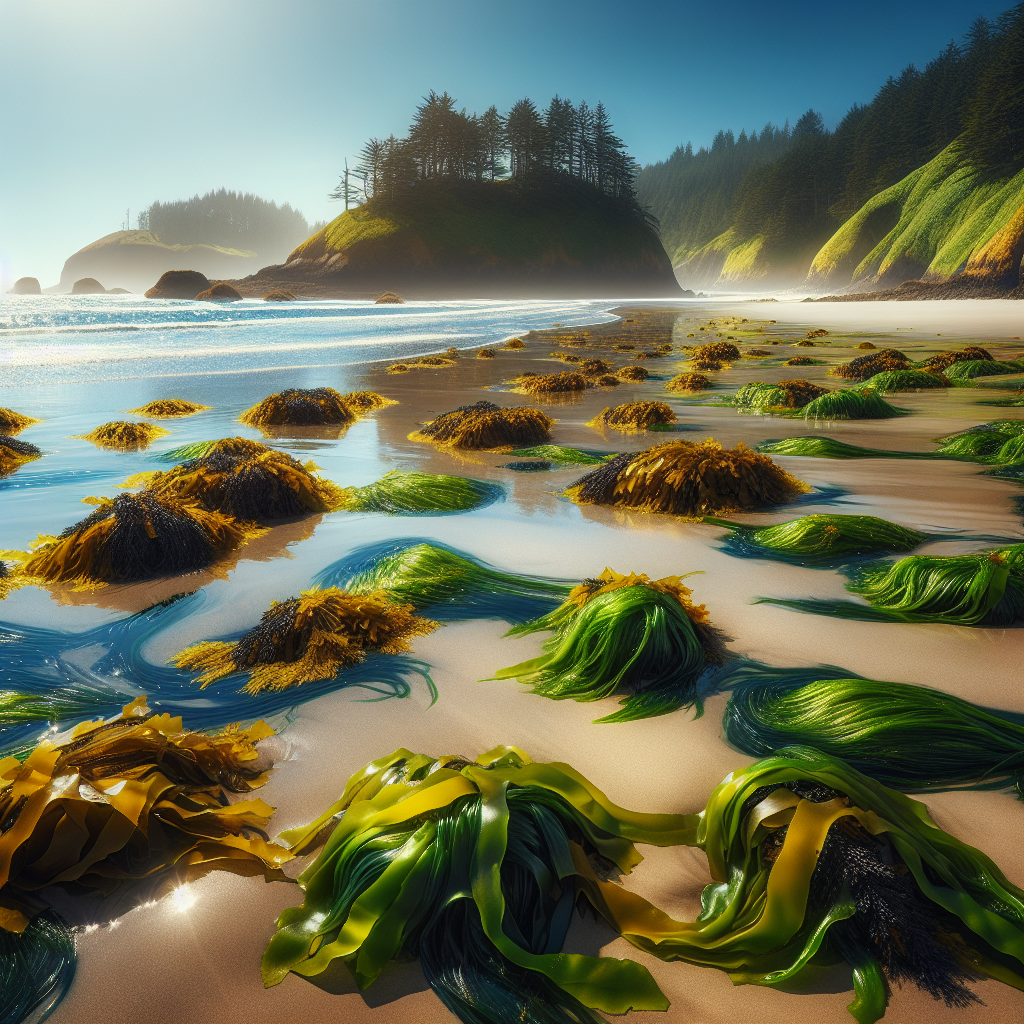Title: Foraging Seaweed on the Oregon Coast: A Beginner’s Guide
Embrace the Wonder of Oregon’s Coastline
No day can be considered ordinary when you’re wandering along the misty shores of the Oregon coastline, a truly understated gem nestled on the Pacfic Coast. For the adventurous souls, there’s a wealth of untamed beauty and plenty of delicious, sustainable harvesting opportunities waiting, especially when it comes to foraging seaweed.
Getting Started: What You Need to Know
The adventure of Oregon seaweed foraging begins with understanding a few basics, not unlike learning to fish on the timeless Columbia River or casting your first fly into the pristine Rogue. Knowing when to harvest, which types to seek out, and how to identify healthy specimens, are crucial to become a savvy forager.
To make the most of the journey, it’s important to embrace the Oregonian spirit of resilience and respect toward nature. Being open to new experiences and showing gratitude for the treasure trove the ocean provides is an essential part of the process, just like it is while mushroom hunting in the Mt. Hood National Forest.
Understanding Tides and Timing

One does not simply wander into Powell’s City of Books without checking the opening hours. The same holds true for seaweed foraging. The optimal time for this venture comes at low tide. Aim to get to your chosen spot an hour before peak low tide, and plan to leave about an hour after. Keep in mind that coastal weather changes quickly in the afternoon, so afternoons can get treacherous. Time borrowed from the ocean must always be given back.
Foraging Locations: The Best of the Coastal Line
Seaweeds are found aplenty on rocky areas of the shore, and Oregon’s 363-mile coast offers plenty. From the craggy shores of Otter Point State Recreation Site to intertidal zones at Boiler Bay State Scenic Viewpoint, foragers are sure to find a bounty.
Though tempting, it’s advised to avoid popular tourist areas during peak season, such as Haystack Rock at Cannon Beach. The crowd can make it hard to forage, and for a more serene experience, it’s best to choose a lesser-known location.
The Seaweeds to Seek Out
Oregon’s coastline supports a diverse variety of seaweeds that range from Bull Kelp in Newport, with its long stalks and bulbous ends, to green seaweeds like Sea Lettuce found scattered across the tidal pools of Seal Rock. Familiarity with the different types and understanding their usage in cooking will help guide your harvest.
Permits and Conservation: Locals Know Best
An indispensable part of being an Oregonian is our commitment to preserving the beauty state’s natural resources. As with angling licenses, a 0 personal use marine life permit from the Oregon Department of Fish and Wildlife is required for seaweed foraging. And remember: take only what you need, leaving enough behind for the marine life that depends on it.
Cleaning, Storing, and Enjoying Your Seaweed Bounty
It’s well known to the locals here that cleaning seaweed thoroughly, air-drying with care, and storing properly are essential steps to preserve your harvest. Soon you’ll be adding delightful sea flavor to everything from home-cooked stews to ramen bowls at the famous Pine Street Market.
Final Oasis of Advice
Unlike the winding paths of Forest Park or the unpredictable falls at Multnomah, seaweed foraging doesn’t require years of experience or exhaustive preparation. Instead, all that’s needed is a sense of adventure, some basic knowledge, and deep respect for the natural world. Remember, seaweed foraging isn’t just about a unique culinary experience; it’s also about connecting with the ocean, just as you would take a moment to connect with the myriad blooming roses in Portland’s famous International Rose Test Garden.
Embrace this enriching journey. Slow down, observe, and feel the crunch of shells underfoot. Become one with the rhythm of the tides. Relish the tangy salt air, head back home with your pockets full of majestic ocean bounty. Reflect, just as you would while watching the sunset at Crater Lake. The Oregon coast is more than just a place filled with natural treasures—it’s a way of living, a whisper of the tides told in the language of the heart.
Welcome to the Oregon coastline! May you return with sand in your shoes and sea in your soul.
Happy foraging!
